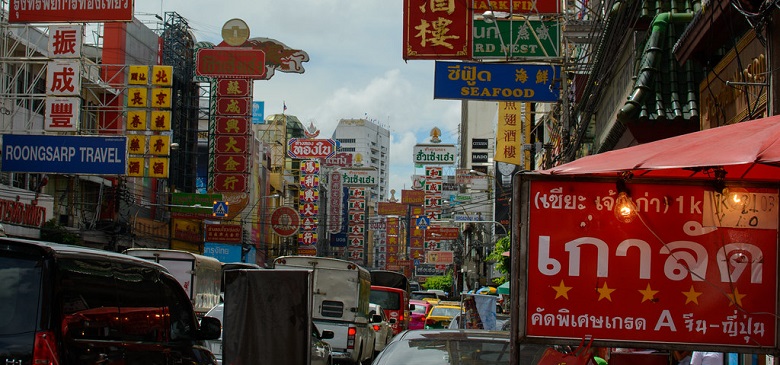
Business and development: unleashing cross-sectoral synergies in Asia
Rapid economic growth in Asia has given rise to complex development challenges ranging from poverty reduction to gender rights. More businesses are now exploring impactful and collaborative solutions to addressing social and environmental issues. We recently looked deeper into the benefits of investing in gender rights and empowering women in supply chains. Gap’s P.A.C.E. (Personal Advancement & Career Enhancement) programme in India, for example, had shown high net return rates for the factory of 124% after a year and 420% after 20 months due to improved attendance and productivity. By understanding the broader development agenda, businesses can reduce risks, gain distinct competencies, improve reputation and maintain their social license to operate in booming Asian markets.
Business has only recently joined-forces with governmental and non-governmental organisations (NGOs) in international development efforts. Today, most stakeholders view the private sector as a positive agent of change to achieve sustainable development. In a survey conducted by Harvard University’s Kennedy School of Government, 45 global opinion leaders in business, civil society and the media who participated in this survey all agreed with the central role of private sector in addressing development issues of emerging markets. In addition, the Australian Government listed “engaging the private sector” as one of the 10 targets of its aid programmes, echoing similar approaches and policy shifts of other donor countries.
New models for strategic partnership between corporations, development agencies and NGOs hold great potential for future sustainable development. That said, the value of cross-sectoral partnerships cannot be fully unleashed unless a programme is well designed, implemented and measured at ground level, fulfilling development agencies’ common criteria such as:
- sharing resources, responsibilities, risks and opportunities among partners
- connecting core business competencies with development issues
- contributing to the global development agenda
- being relevant to the country’s development policy and needs
For development actors and practitioners in Asia, what are the success factors or stories for business-development partnerships?
At this year’s CSR Asia Summit, we brought together the Deutsche Gesellschaft für Internationale Zusammenarbeit (GIZ) GmbH and representatives from businesses, NGOs and development banks for a multi-stakeholder dialogue on the challenges, incentives and potential opportunities for sustainable development. GIZ, one of the most effective development partners in private sector engagement, shared the experience and insights gained from the Emerging Market Sustainability Dialogues (EMSD) during the breakfast meeting. EMSD is a global network of change agents and decision makers from think tanks, multinational corporations, and the financial sector, which GIZ implements on behalf of the German Federal Ministry for Economic Cooperation and Development (BMZ).
As key takeaways from the breakfast meeting, here we compile a 3-step guide on how to create and maintain successful partnerships with development agencies:
- Aligning critical sustainability challenges that you face with development issues
Business goals and development issues might not be in conflict. To identify your objectives and priorities for the partnership, examine the most critical sustainability challenges that hinder local development and your business growth, and understand the goals and various programmes of development agencies. This can help you evaluate whether a business-developmental agency partnership adds value to private sector solutions, and match your core competencies with localised development needs. - Engaging a development agency in a multi-stakeholder setting for long-term impacts
You may start a casual conversation with a development agency about a sustainability idea nearly anywhere, but extending it to an open, ongoing and inclusive dialogue with multiple stakeholders can generate long-term impacts and sustain a successful engagement. While it takes time and efforts to build relationships and mutual trust, all parties should listen and share more with each other about their roles in contributing towards the common goals. - Building a coherent understanding of sustainability with well-defined division of labour
Corporations, development agencies and NGOs possess different types of expertise and may have varying understandings of development. Designing flexible approaches to addressing development issues that are locally-driven and context-specific can ensure effective implementation at the project level, together with clear goals, roles and responsibilities.
Join the dialogue
On the path towards sustainable development, all willing actors can contribute to co-creating cross-sectoral synergies. The Social and Labour Standards in the Textile and Garment in Asia (SLSG) programme that GIZ implements on behalf of BMZ is organising a Round Table twice a year with various stakeholders in the Textile and Garment Sector in Asia. Join the dialogue if you would love to drive cooperation among Asian textile producing countries, and avoid a “race to the bottom” in the context of sustainability standards in the industry in Asia.
For more information, please contact Dr. Cinderella von Dungern, China Coordinator, EMSD (cinderella.vondungern@giz.de) or Ms. Zhou Yiqi, Project Manager, EMSD (yiqi.zhou@giz.de).